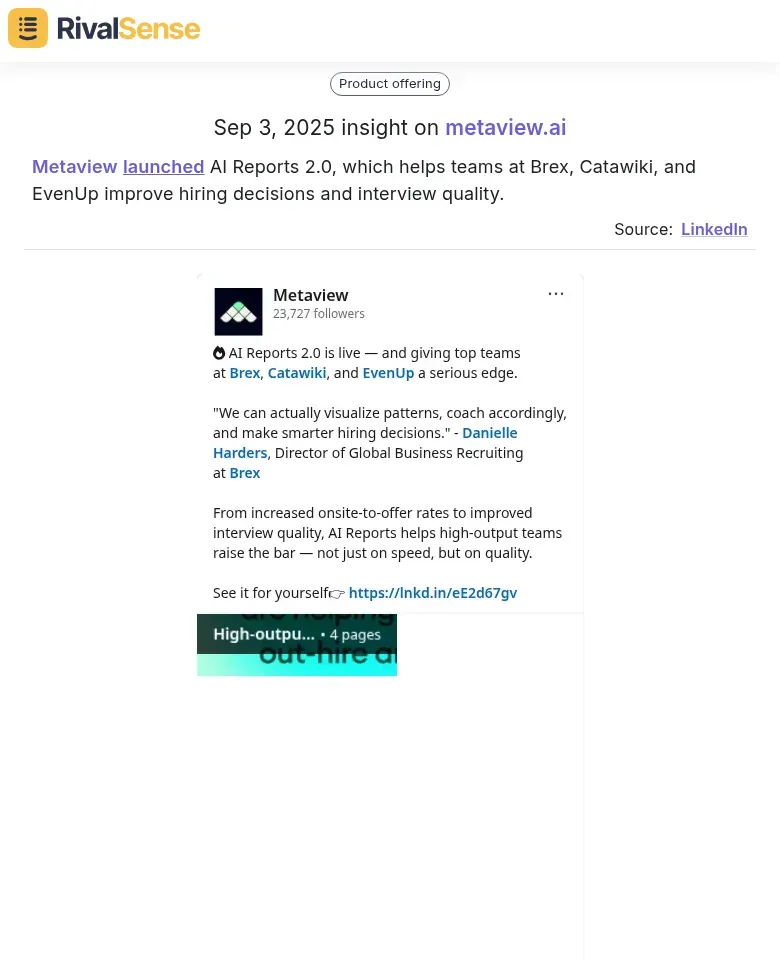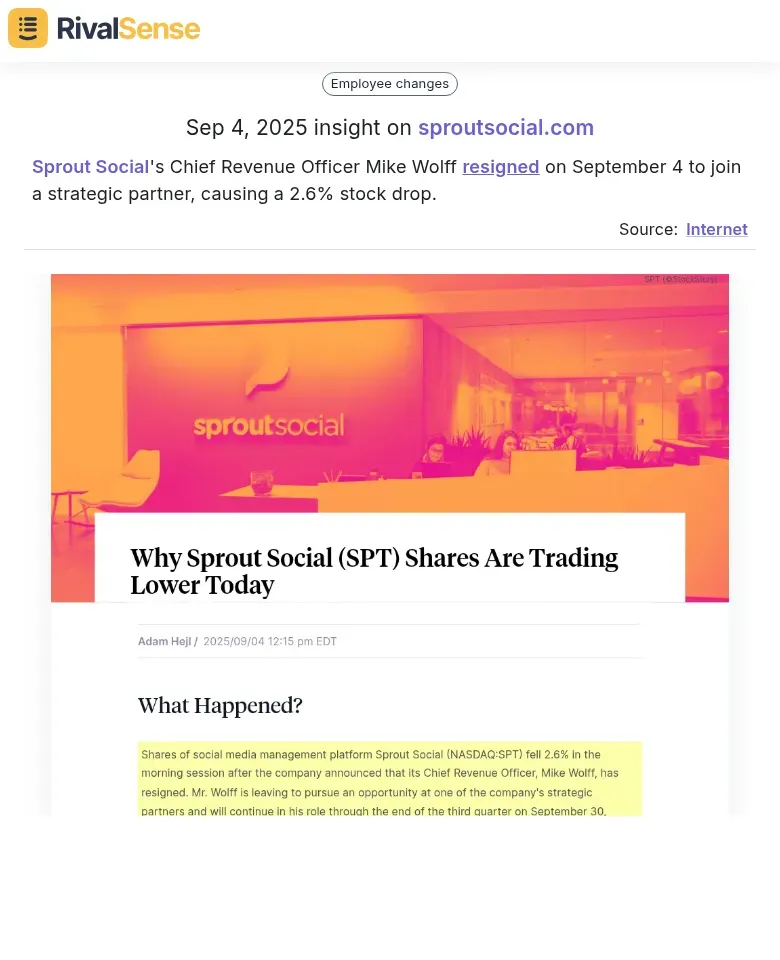Business Partnership Best Practices: The Ultimate Strategic Guide for 2025
Strategic partnerships have become essential for business growth in today's competitive landscape. According to recent research, over 80% of CEOs are actively seeking or planning strategic partnerships, yet only about 65% succeed in forming them. With partnership failures occurring in more than half of cases, understanding and implementing best practices is crucial for success.
What Makes a Partnership Strategic? 🤝
A strategic partnership involves independent entities sharing benefits, risks, and control while making ongoing contributions in strategic areas. These partnerships typically form when companies need to acquire new capabilities within their existing business framework. The key characteristics include:
- Independence: Partners maintain separate operations
- Shared benefits and risks: Equitable distribution of rewards and challenges
- Ongoing strategic contributions: Continuous value creation
- Various structures: Minority equity investments, joint ventures, or non-traditional contracts
The 5-Step Framework for Successful Partnerships
1. Strategize: Align with Business Objectives 🎯
Before seeking partners, clearly define how partnerships align with your overall business strategy. Consider:
- Competitive threats: Address imitation through value channel partnerships and substitution through business model-level strategies
- Organizational readiness: Ensure commitment at all levels and adapt structures for partnership management
- Capability mapping: Identify internal strengths and gaps where partnerships can add value
Example: Nestlé transformed its R&D approach by creating a dedicated partnership unit, moving from 2 partnership managers to a comprehensive ecosystem approach.
2. Search, Screen, and Select: Cast a Wide Net 🌐
Avoid the common mistake of considering only a few options. Instead:
- Explore the entire ecosystem: Look beyond immediate contacts to include suppliers, research partners, industry organizations, and conferences
- Focus on capability acquisition: Seek partners who complement your existing strengths
- Evaluate cultural fit: Ensure alignment in values, competencies, and readiness to invest "in kind"
Real-world example: Monitoring product launches can reveal potential partners with complementary capabilities. For instance, when Metaview launched AI Reports 2.0, it signaled their advanced hiring technology that could benefit HR-focused partnerships.

Tracking such developments helps identify partners with cutting-edge capabilities that align with your strategic goals.
3. Structure: Choose the Right Framework 📋
Select the appropriate partnership structure based on your specific needs:
- Non-equity alliances: Ideal for high uncertainty markets or when maintaining competition between partners
- Joint ventures: Best for cultural or size differences, but require independent teams to succeed
- Equity partnerships: Serve as trust substitutes when personal relationships are weak
Critical consideration: Invest "in kind" (equipment, technology, people) rather than cash to maintain long-term commitment rather than transactional relationships.
4. Start and Stabilize: Build Supportive Culture 🌱
Successful partnerships require:
- Executive sponsorship: C-level commitment and involvement
- Corporate priority status: Inclusion in communication strategies
- Conflict resolution mechanisms: Interest-based problem solving with clear escalation paths
- Cultural awareness: Understanding differences in communication styles and business practices
5. Study and Steer: Continuous Improvement 📊
Establish mechanisms for ongoing partnership management:
- Dedicated partnership units: Centralized teams to manage portfolios and share best practices
- Performance metrics: Jointly developed success indicators
- Regular reviews: Annual partnership agreement assessments
- Knowledge brokering: Institutionalizing organizational memory and best practices
Leadership changes insight: Executive movements can significantly impact existing partnerships. For example, when Sprout Social's Chief Revenue Officer resigned to join a strategic partner, it caused a 2.6% stock drop and potentially affected their partnership dynamics.

Monitoring leadership changes helps anticipate partnership impacts and adjust strategies accordingly.
Partnership Checklist: 10 Essential Steps ✅
- Define clear objectives: What specific capabilities or market access do you need?
- Conduct thorough due diligence: Research potential partners' financial stability, reputation, and cultural fit
- Develop partnership criteria: Create scoring systems for evaluating potential partners
- Draft comprehensive agreements: Include IP ownership, conflict resolution, and exit terms
- Establish governance structures: Define decision-making processes and escalation paths
- Create joint value propositions: Develop clear messaging for internal and external stakeholders
- Implement communication protocols: Regular meetings and transparent information sharing
- Set performance metrics: Agree on measurable success indicators
- Plan for conflict resolution: Pre-establish mediation and arbitration processes
- Develop exit strategies: Clear terms for partnership dissolution
Common Pitfalls and How to Avoid Them ⚠️
Research identifies three major reasons for partnership failure:
- Underinvestment: Disagreement on revenue sharing, lack of resources, or insufficient executive commitment
- Over-appropriation: Issues with customer ownership, intellectual property sharing, or coopetition
- Misalignment: Conflicting goals, unclear roles, or difficulty communicating joint value
Emerging Trends for 2025 Partnerships 🚀
Based on current market analysis, successful partnerships in 2025 will focus on:
- Ecosystem collaboration: Moving beyond siloed partnerships to interconnected networks
- Data-driven management: Using analytics to optimize partner performance and ROI
- Digital-first enablement: Remote training and support systems
- Influencer and affiliate integration: Leveraging trusted voices for authentic recommendations
Product enhancement tracking: Monitoring feature updates like Metaview's AI Reports 2.0 launch provides insights into partnership opportunities with companies advancing their technology stack.

Staying informed about product evolution helps identify complementary capabilities for strategic alliances.
Key Takeaways for Sustainable Partnerships 📝
- Trust is foundational: Equity can substitute for trust, but strong personal relationships drive better outcomes
- Middle management involvement: Engage operational teams from both companies to ensure alignment
- Cultural compatibility: Similar values and communication styles significantly impact success
- Continuous adaptation: Partnerships must evolve with changing market conditions
- Transparent communication: Open dialogue prevents misunderstandings and builds strong relationships
Successful strategic partnerships require careful planning, ongoing management, and adaptability. By following these best practices and learning from both successes and failures in your industry, you can build partnerships that drive sustainable growth and competitive advantage.
Ready to enhance your partnership strategy? Try RivalSense for free to get comprehensive competitor insights and track potential partners' activities across 80+ sources. Get your first competitor report today and stay ahead in the partnership game!
📚 Read more
👉 Localize Semiconductor Partnerships: 5 Actionable Strategies for Growth
👉 How Barbour's Australia Expansion Triggered Competitive Responses (And How to Monitor Them)
👉 Instagram Competitor Analysis: Turn Insights Into Strategic Account Planning
👉 Predictive Analytics for Forex: Maximizing Key Account Profitability in 2025
👉 Competitor Media Analysis: Uncover Hidden Partnership Opportunities
